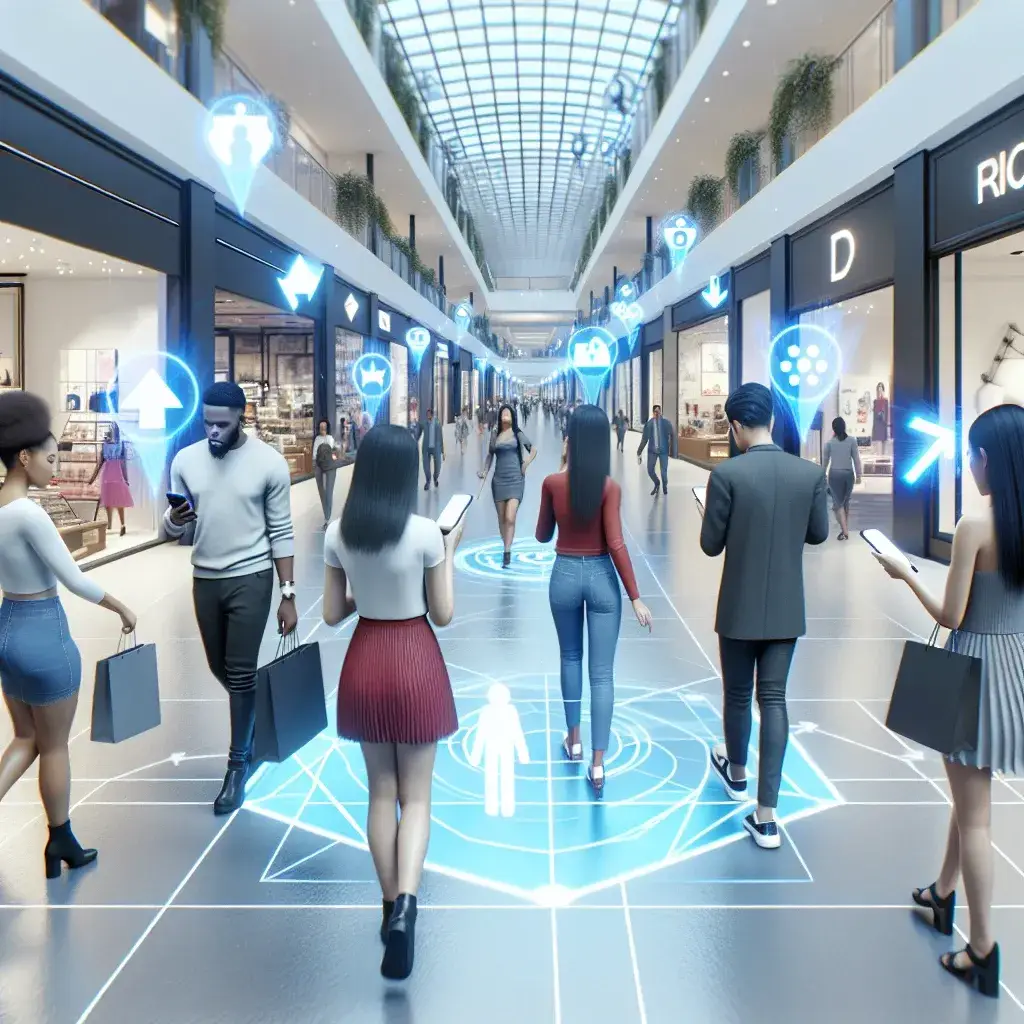In an era where technology constantly redefines our everyday experiences, Google Maps has emerged as a pivotal player in enhancing navigation, especially in bustling environments such as shopping malls. Recently, Google announced significant expansions in its Augmented Reality (AR) navigation overlays specifically for U.S. malls. This innovative advancement is set to revolutionize the way people navigate complex retail spaces, providing a seamless experience for shoppers. In this article, we will delve into the implications of this technology, its features, and what it means for the future of retail navigation.
Understanding AR Navigation Overlays
Before diving into the specifics of Google Maps’ AR navigation, it’s essential to understand what AR navigation overlays entail. Augmented Reality involves overlaying digital information onto the real world through devices like smartphones or AR glasses. When integrated with navigation, it allows users to receive real-time, interactive directions that are visually represented in their immediate surroundings.
The Evolution of Google Maps
Google Maps has come a long way since its inception. Originally launched in 2005, it has evolved from a simple mapping service to a sophisticated platform that offers various functionalities, including live traffic updates, route planning, and now, augmented reality capabilities. The inclusion of AR technology represents a significant milestone in the app’s evolution, particularly for indoor navigation.
The Challenge of Indoor Navigation
Navigating inside shopping malls can be a daunting task due to their complex layouts, numerous levels, and countless stores. Shoppers often find themselves disoriented, struggling to locate specific stores or amenities. Previous navigation methods largely relied on static maps and signage, which, while helpful, did not offer the real-time guidance that AR technology can provide.
Features of Google Maps’ AR Navigation for Malls
The newly introduced AR navigation overlays in Google Maps for U.S. malls boast several innovative features designed to enhance the shopping experience:
- Real-time Directions: Users can receive step-by-step directions superimposed directly on their smartphone screens, guiding them to their desired store.
- Interactive Store Locator: Shoppers can view real-time information about nearby stores, including promotions and store hours.
- User-Friendly Interface: The interface is designed to be intuitive, making it easy for shoppers of all ages to navigate the app.
- Enhanced Visual Cues: The AR overlays will feature arrows and markers that are displayed in the user’s line of sight, making it easier to follow directions in crowded spaces.
Benefits of AR Navigation in Malls
Adopting AR navigation in malls comes with numerous benefits that can transform the shopping experience:
- Improved Customer Experience: Shoppers can easily locate stores, reducing frustration and enhancing their overall experience.
- Increased Foot Traffic: By simplifying navigation, malls can encourage shoppers to explore more stores, potentially increasing sales for retailers.
- Time Efficiency: Shoppers can save time by quickly finding their destinations without wandering aimlessly.
- Real-time Updates: Users receive notifications and updates about store promotions or events happening within the mall, enhancing their shopping experience.
Challenges and Considerations
Despite the exciting advancements, the implementation of AR navigation in malls is not without its challenges:
- Technical Limitations: The effectiveness of AR technology can vary based on the user’s smartphone capabilities and the mall’s infrastructure.
- User Adoption: Some shoppers may be hesitant to embrace new technology, preferring traditional navigation methods.
- Privacy Concerns: As with any technology that collects data, there are concerns regarding user privacy and how data is utilized.
Future Predictions: The Role of AR in Retail
The expansion of AR navigation overlays is just the beginning. As technology continues to evolve, we can expect even more advancements in retail navigation. Future predictions include:
- Integration with Loyalty Programs: Retailers may leverage AR navigation to offer personalized promotions based on shopper preferences and loyalty status.
- Virtual Store Experiences: Imagine stepping into a virtual store before physically entering—AR may make this a reality.
- Collaborative Shopping: Friends and family could navigate together in real time, sharing directions and experiences regardless of their physical locations.
Conclusion
The expansion of AR navigation overlays in Google Maps for U.S. malls marks a significant step forward in the integration of technology within retail environments. As shoppers increasingly embrace digital solutions, this innovation is likely to enhance customer experiences, boost foot traffic, and revolutionize how we perceive shopping. While there are challenges ahead, the potential benefits of AR technology in malls cannot be overlooked. The future of shopping is here, and it’s augmented, interactive, and user-friendly.
Final Thoughts
As we immerse ourselves in this new era of AR technology, it becomes vital for both retailers and shoppers to adapt to these changes. Embracing AR navigation not only enhances the shopping experience but also sets a precedent for future innovations in how we interact with the physical retail space. With Google Maps leading the charge, the integration of AR technology promises to make shopping easier, more engaging, and ultimately more enjoyable for everyone involved.

Leave a Reply